Here’s Everything You Ever Wanted to Know About Aston Martin’s Obsession With Design
“We aspire to make the most beautiful cars in the world.”
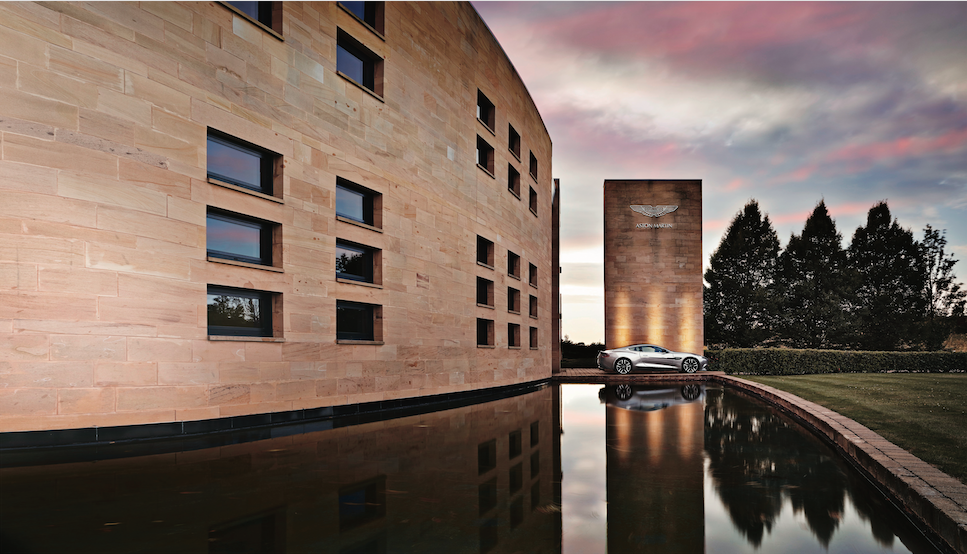
Aston Martin is nothing if not ambitious. To put it bluntly: “We aspire to make the most beautiful cars in the world,” says the automaker’s CEO, Andy Palmer. “That’s what differentiates us. That’s what makes us special.”
While beauty has been a common thread through Aston Martin’s 104 years, it didn’t always drive the conversation the way it does now. When Robert Bamford and Lionel Martin founded the company in 1913, they focused on racing, going bankrupt a couple of times as road car production ramped up in the ’20s.
By the ’30s the company began getting noticed for cleverly engineered cars like the Atom, an aluminum-bodied four-door concept that impressed industrialist David Brown, who bought Aston Martin in 1947 after seeing a “for sale” ad in a newspaper.
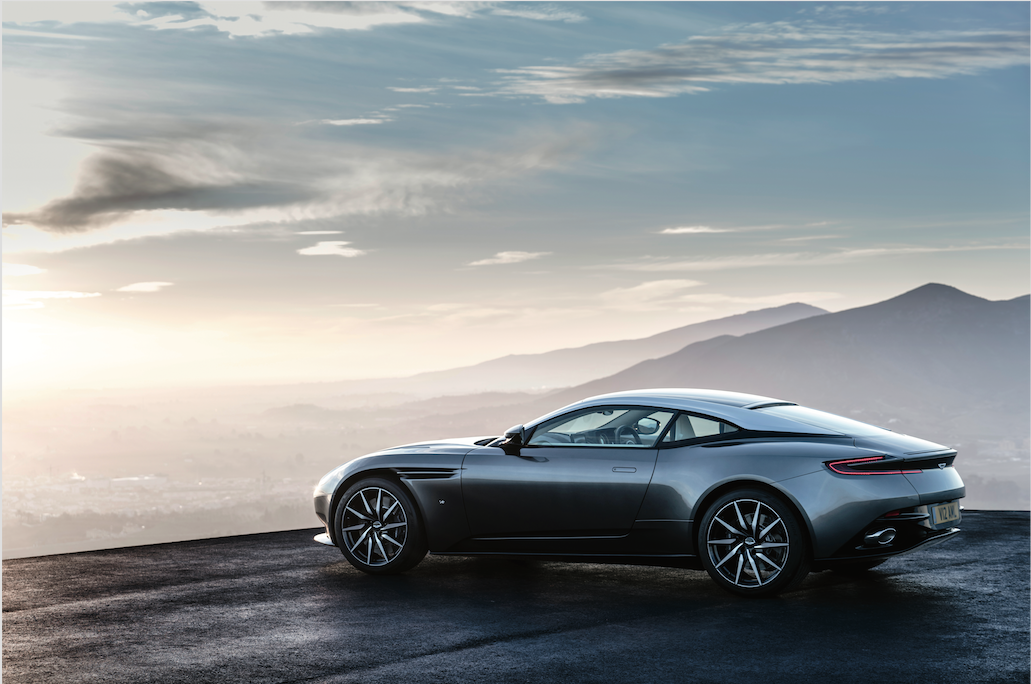
By the end of the decade an all-new DB series of road cars had launched, each wearing the not-so-humble owner’s initials. The DB2 sold well, gave way to the DB MK III, and was followed by the DB4, which wore a gorgeous aluminum body from the coachbuilding experts of Milan’s Carrozzeria Touring.
After an overall victory at the grueling 1959 24 Hours of Le Mans, Aston Martin kicked off the ’60s by debuting a DB4 that had stunning bodywork from yet another Italian coachbuilder, Zagato, spawning a half-century partnership that would see a dozen collaborations.
Aston Martin’s love of beauty became clearer in 1963, when the jaw-dropping DB5 entered production. The DB5’s infamous cameo in the third James Bond film, Goldfinger, turned the car into poster porn— everyone wanted 007’s Aston Martin. The company stayed strong through the ’60s, but momentum slowed in the ’70s, starting with its sale to a holding group in 1972, then to a pair of American businessmen three years later.
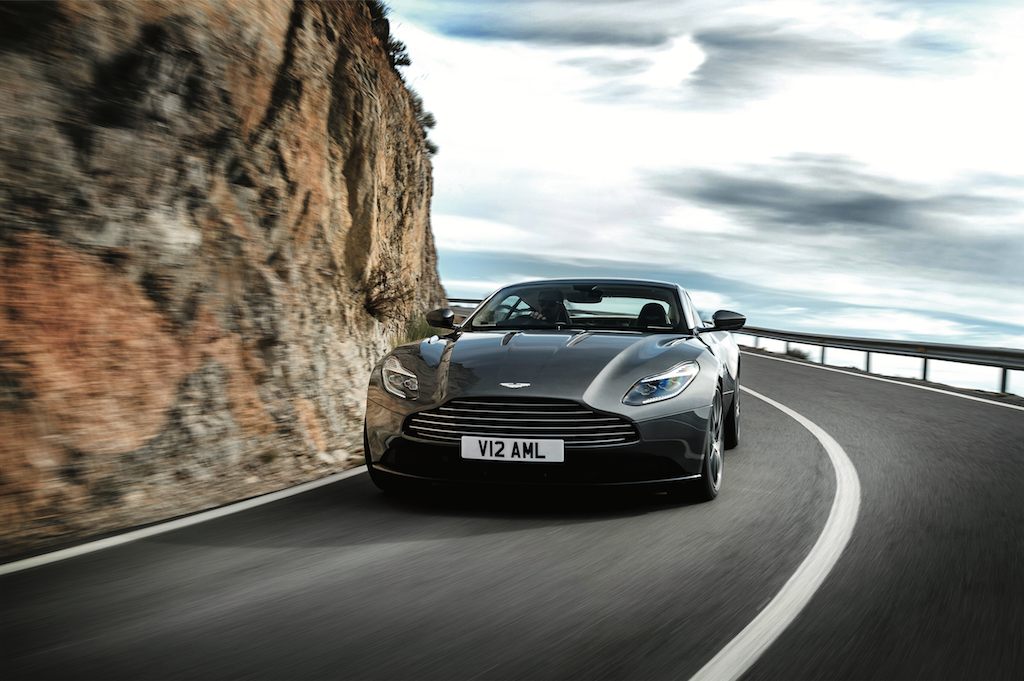
“There was a lot of boom and bust in our product cycles,” says Marek Reichman, Aston Martin’s chief creative officer. The company stabilized somewhat but at the cost of creating compelling cars. Aston Martins were no longer objects of beauty or desire, but boxy sedans that didn’t feel sexy.
“Various investors who came into the company, often on an ego trip, invested in one car, built the car, and then went away,” Palmer says. “They either didn’t have the money to do another car or they sold the company.”
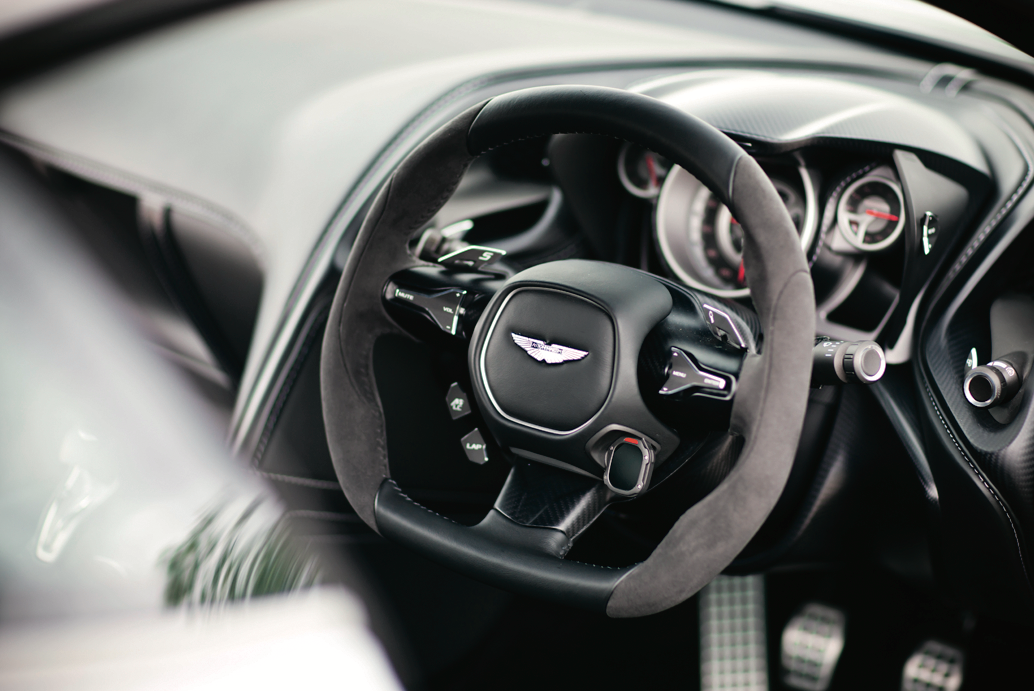
Aston Martin languished through the ’70s and into the early ’80s until, in 1987, Ford Motor Company bought a three-quarter stake in Aston Martin. The ’90s saw the release of Aston’s swoopy and stylish DB7, which repurposed an unused project from another Ford property, Jaguar.
The unbelievably gorgeous replacement for the DB7, the DB9, debuted in 2004, a year after Aston Martin established a new headquarters and design studio in the rural town of Gaydon, England. (Ford sold its controlling stake in the company in 2007.) At the studio’s opening, then CEO Ulrich Bez said it showed “a commitment from the shareholders of how important the design of new models is to the company’s future.”
Aston Martin had mojo again, creating evocative cars that captured the imagination of a whole new generation, like the One-77, a dramatic carbon-fiber hypercar that topped out at 220 mph and claimed the title of the world’s most powerful naturally aspirated car, or the V-12 Zagato that stunned the crowd at Italy’s 2011 Concorso d’Eleganza Villa d’Este.
To mark the automaker’s centenary in 2013, Reichman designed the lusty CC100 speedster concept, a nod to the DBR1 racecar that Carroll Shelby co-drove with Roy Salvadori to victory at Le Mans in 1959. But Aston Martin still lacked saliency and made missteps, like the short-lived Virage and Cygnet city car, so in 2014 the company brought in Palmer, who went straight to work on a plan to sustain Aston Martin through its second century of life.
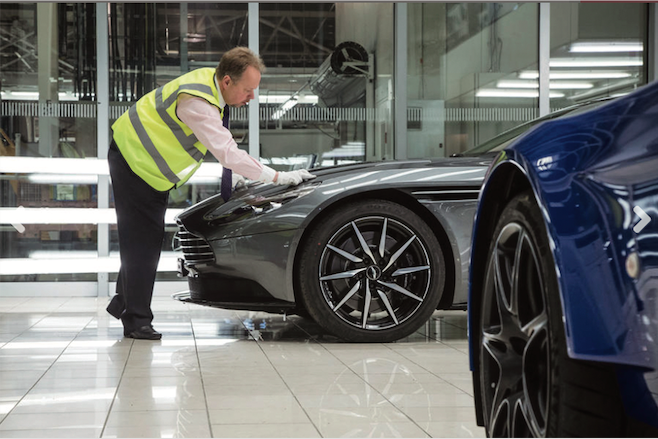
The plan Palmer came up with is simple: Aston Martin will have a lineup of seven cars, each with a seven-year lifespan. The first to debut is the lovely new DB11, which can be optioned with a brogue interior. Reichman says the company will launch the second product this year and, by the third quarter, have a derivative of the DB11, referring no doubt to a drop-top version dubbed DB11 Volante. In 2018 comes an all-electric Aston Martin, followed by a low-slung SUV late in 2019.
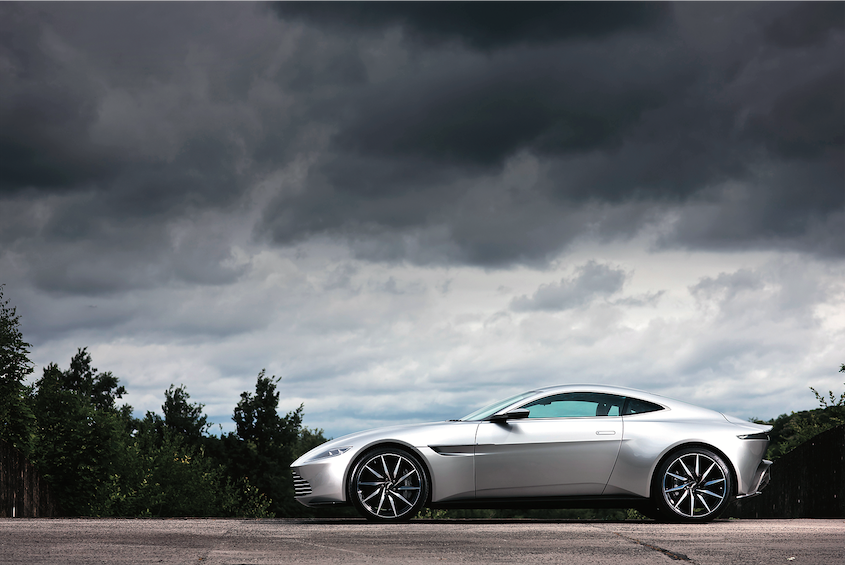
In 2015 Aston Martin released the Vulcan, a stunning carbon-fiber, track-only toy for well-heeled driving enthusiasts. The low-slung Vulcan weighs less than 3,000 pounds and has aerodynamic aids like an adjustable rear wing, front splitter, and rear diffuser. Behind its front wheels is an 820-horsepower, 7.0-liter V-12 engine that feeds power to a sequential six-speed gearbox.
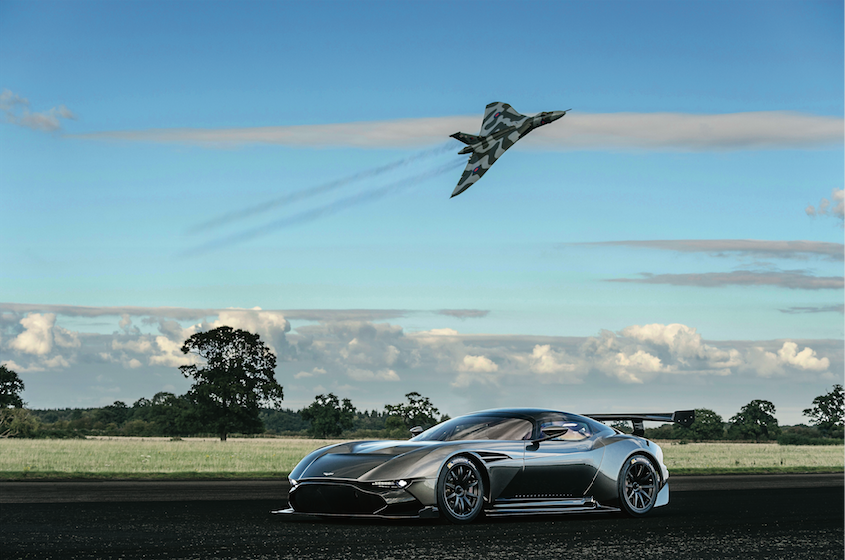
Only 24 examples of the Vulcan exist worldwide, and the sharp-edged model will be displaced by the forthcoming Valkyrie and the line of mid-engine supercars it spawns. Here you see the brash Vulcan beneath its namesake, the Vulcan XH558 long-range bomber. CEO Palmer said, “Clearly the Avro Vulcan provided the inspiration for the naming of our most extreme sports car, and I’m delighted that we have been able to unite the ‘two Vulcans’ and deliver our own tribute to this world-renowned aeronautical phenomenon.”
The other car that has everyone talking is the Valkyrie, the ridiculous hybrid hypercar tandem- built by Aston Martin and Red Bull Advanced Technologies. “It’s the creator of the line of DNA that will make up our range of mid-engine cars,” says Palmer. “It’s really important from that perspective. It will be one of those halo cars of the brand. It’s a defining car of the company and a defining car of my career.”
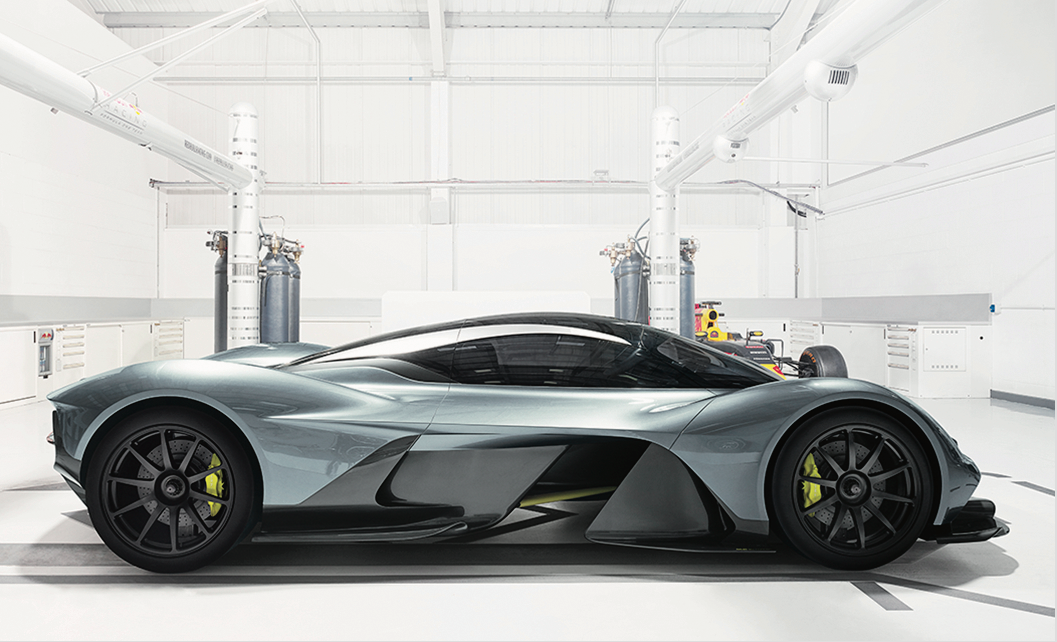
Aston Martin also has a technical partnership, via shareholder Daimler, with Mercedes-AMG, which Palmer says provides key technologies, “mainly its V-8 engine and its electronic architecture.” He says having AMG as a partner allows Aston Martin to be contemporary in advanced technologies like autonomous driving, which will be essential to Aston Martin’s Lagonda sub-brand that typically attracts buyers with chauffeurs. Another of Aston’s sub-brands, AMR, offers edgier variants, and there’s Q by Aston Martin, which customizes about 10 percent of all Aston Martins sold.
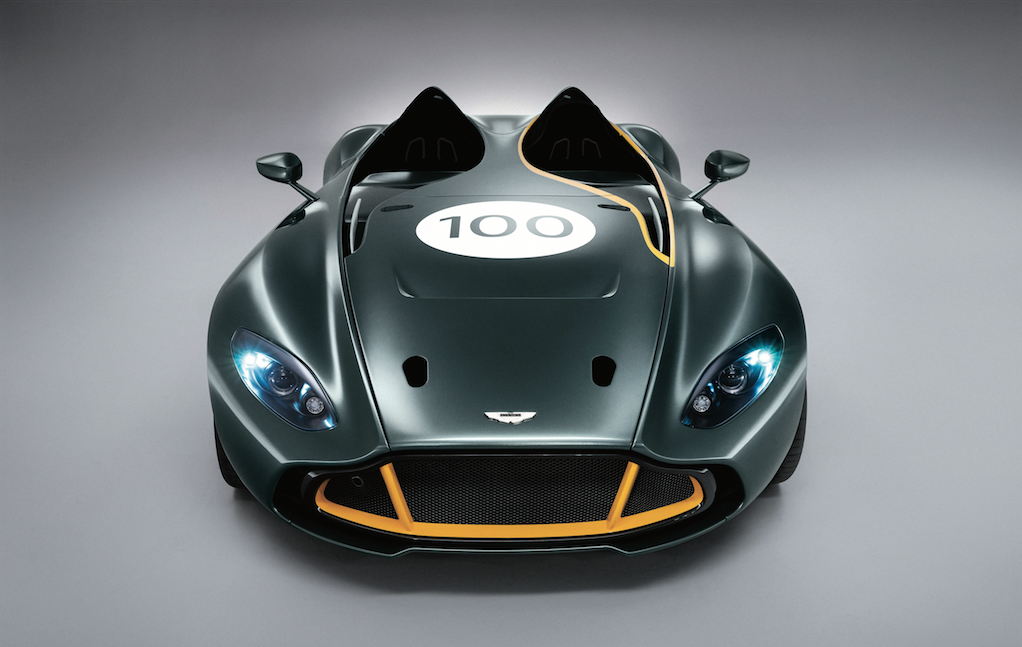
“Q is bringing to front of mind that the entire car is handmade,” Palmer says. “A luxury-car customer wants a narrative, a story. They want to tell the story that they worked with Aston Martin to develop something. You get something you made, you love, and it’s yours.”
In Palmer’s plan, the supposed tie that binds these branches together is beauty, Aston Martin’s raison d’être. “We had to pick something to lead at. You have to decide what you are, because that defines what you can’t do. Clearly, Ferrari owns passion and the 0.001-second improvements [in acceleration], and clearly Rolls-Royce owns luxury. We are also sport and luxury, but what we think we’ve come to work for is the love of beautiful,” says Palmer.
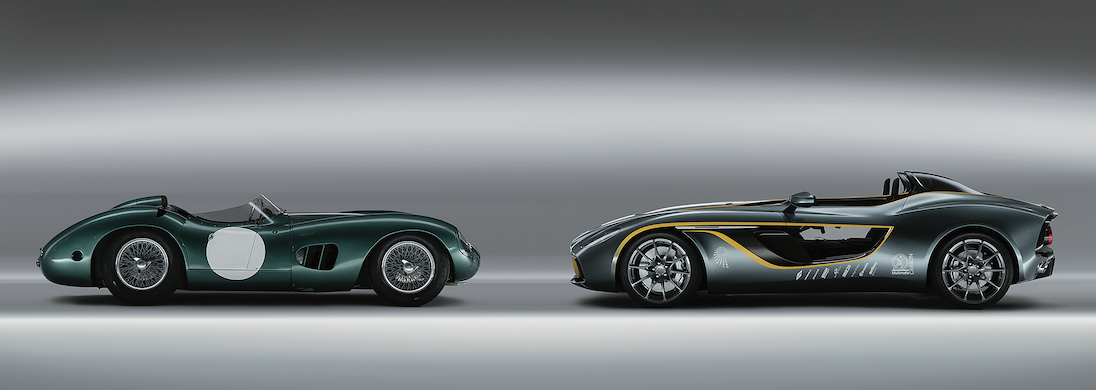
In Reichman’s opinion, beautiful cars cause positive reactions, and those reactions can sustain a company through any period, however trying. With Aston Martin’s unfortunate history around bankruptcy, perhaps building a business around the idea of beauty isn’t a bad idea. Then again, beauty can’t be captured or defined, as its standards evolve with our own, so is Aston Martin chasing a rabbit it might only see the tail of?
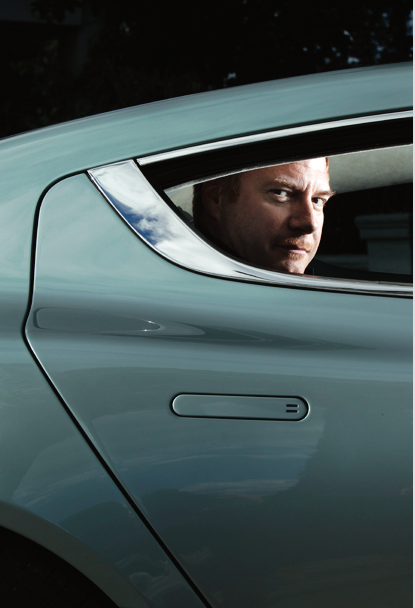
Maybe, and maybe that’s not a bad thing. Beauty is a muse that stirs desires, drives innovation, and tickles with delight, and a sharper focus on beauty seems to have engendered a stronger, more self-assured Aston Martin.
“Just tell the world what you do, what you stand for,” Reichman says. “Why we have seamstresses that sew the left and right seats together, because the line that they use is slightly different from someone else’s, so you always get a matched pair. I’ve described each of our cars as having a fingerprint. They’re all individual, they’re all unique. We’re explaining who we are and why we’re different.”
